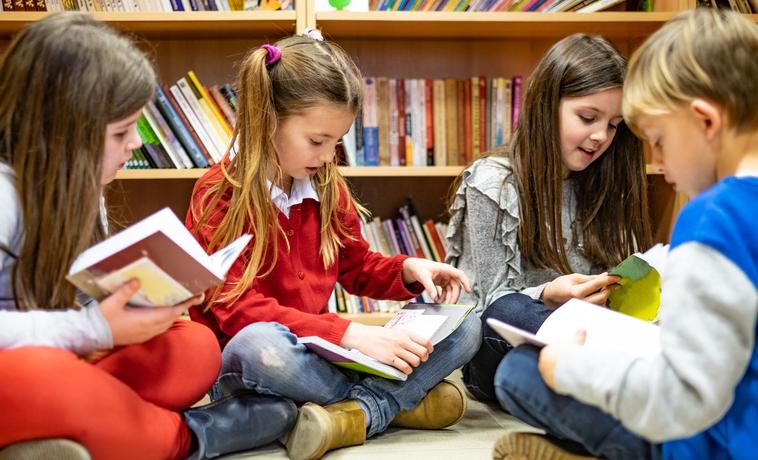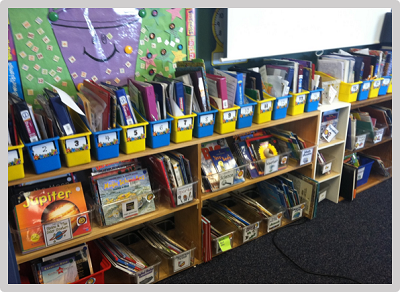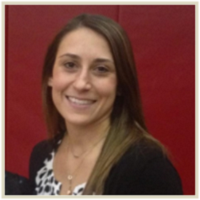

BLOGS > APRIL 12, 2024
BY NICOLE STROUP

We all know that books are essential for learning, and as educators we buy them, collect them, receive them, but then what? We have some great and not-so-great books in our classrooms, and it’s hard to decide what goes into the library and what stays out; and if it stays out, what do I do with the book? We also spend countless hours figuring out the best way to manage our libraries because we have young students who are eager to pick them up, and then put them away in an unexplainable location where we might never find that book again! Join me through a three-part blog series where I describe the best practices with your classroom library, how to organize and manage it for your sanity and student accessibility and ownership, and how to keep it fresh and up-to-date to ensure your students want to visit frequently.
When we build classroom libraries, we have to have purposeful intentions behind them. There are many considerations to keep in mind when building your classroom library because it can definitely be overwhelming, and we certainly don’t want to take the time to put it together and do it all over again!
Here are some questions we will explore.
To me this is simple: build a love of reading. My goal was always to get students to build confidence in themselves as readers, explore new genres, topics and interests, and have a choice in what they were reading.
Where will you put your library?
I believe a classroom library is the heart of your classroom. I put mine front and center in the front of the classroom. It went along a wall and was short enough that my students could access it without the books being above their eye level and reach. It took up an entire wall as it grew. When thinking about where to put your library, think about how well students can access it. Nothing is worse than having an awesome library with high-interest books that students can’t find or access. Make sure students can reach the books and that they do not exceed eye level. What is the point of having a classroom library if you put the books out of reach?
What books should you include in your library?
Include it all! Okay, we wish, but our classrooms are not as large as school or public libraries. We have to be choosy at times because of constraints like space and money. I included books at and around the grade level I taught. For instance, if I was teaching fourth grade, I would have a variety of chapter books and series, along with a variety of picture books and non-fiction items for them to enjoy. If I taught second grade, I would have some sight word readers, decodable readers, early reader books, early chapter books, chapter book series and a variety of picture books, both fiction and non-fiction. Having a diverse collection of genres will appeal to more of your students.
It’s also a great idea to swap books in and out throughout the year. This keeps your library fresh so your students can always find something new.
To level or not to level?
I believe in leveling students and sitting down with a student to listen to them read. It is powerful in getting to know them as a reader, what their strengths are and what areas I need to help develop and support. I also believe in asking students questions about their interests and how they evaluate themselves as a reader.
I don’t believe in making students choose books based on their level and strictly read leveled books in and out of school. However, I did provide a leveled section of my library, and followed Jennifer Serravallo’s philosophy that students read in a leveled range, which for example, depending on the student’s interest and background they might be able to read a higher level than the one I tested them on with a book they had little to no interest or background. I also don’t find it problematic that students read books that are “too easy” for them. Who doesn’t love returning to a favorite book and reading it for a deeper meaning or to increase their fluency? Reading books that are at an instructional level need support from an adult, and when students struggle through a book without support, the love of reading fades. I certainly don’t want to discourage them from reading or building a love of reading just by making them read a book disinteresting to them because it’s “at their level.”
How will you organize your library?
My classroom library consisted of two sections: one section was leveled and the other was genre-based. For the leveled section of my library, I chose four colored bins (red, yellow, green, and blue) to level my library. My red bins were for any book lower than the grade level I taught. My yellow bins were books that were on grade level at the beginning of the year. My green bins were books on grade level at the middle/end of the year, and my blue bins were books above grade level.

For the genre-based section of my library, I chose clear bins to organize my books. How inviting, right? The clear bins meant students could see the front of the cover and find books easily. Each genre bin had a variety of reading levels mixed in. At times I decided to either color code the book to match my leveled bins, or you could add a level letter to the book. However, I did not make students pick from the genre bins based on their level.
Any mentor texts I used, I kept up on my teacher shelf and also organized by either genre or reading/writing strategy. For instance, I organized mentor texts that I used for science and social science units, as well as texts I wanted to use to model various reading or writing strategies, such as predicting, inferring or visualizing. I used cardboard magazine holders from Ikea to organize these bins and placed cute name tag stickers on the front to label the box.
How will you introduce the library to your students?
When I introduced the library to my students, I liked to read Goldilocks and the Three Libearians. It’s a cute story that takes students through the five-finger rule and helps them understand what books might be a good fit. I also shared with them the I PICK rap, which can be found here.
Students then are given opportunities to pick books in each of the colored bins and try the five finger rule to determine which color would be “just right.” They used the I PICK to jot down some notes and share with me why they feel that color bin is best for them. If I felt they were a bit off, we’d work together using the five-finger rule, and I’d ask a few comprehension questions.
Once they had a color bin, they were able to pick 2-3 just right books and 2-3 books of interest from the genre bins. Students kept those books in a book bin; I got mine from Really Good Stuff because they were durable and lasted forever. In their book bins, I also gave them books from our small group instruction to add and work through during Daily 5. This helped keep them organized and prepared.
I hope some of these tips help you get started. In Part 2 we will explore managing your library and student ownership. In Part 3 we will take a look at keeping your library fresh and up-to-date.

NICOLE STROUP
Regional Office of Education, Lake County IL
With over 10 years of experience in education, Nicole Stroup has been instrumental in supporting staff development, leading teachers, and developing curriculum for districts throughout Lake County. She has rich experience as both an instructional coach and ELA Content Facilitator. She has enhanced the professional learning experience of teachers throughout our area and brings both enthusiasm and a passion for instructional coaching and literacy to her new role. With a Master’s Degree in both Reading Instruction and Educational Leadership, she is committed to serving Lake County schools and districts as a support for English Language Arts curriculum, school improvement, and professional development. Nicole’s broad experience includes teaching at the elementary level as well as supporting school library media staff on library improvements. She emphasizes flexible learning environments, passion for content, and a desire to support the professional learning needs of Lake County educators. Nicole resides in Volo, IL with her husband and young daughter. In her leisure, Nicole enjoys golfing and supports her local girl’s gymnastics team as a coach.
Classroom Libraries 3-Part Series
Part 1: Organizing & Designing Your Classroom Library
Part 2: Student Ownership: Managing Your Classroom Library
Part 3: Next Steps, Updates & Classroom Collaboration
The Top 5 Strategies for Cost-Effective IT Management in K-12 Schools and Districts
April 9, 2024
Introduction IT management has become much more than just keeping the lights on in the computer lab. It's about creating an environment where technology enhances learning without breaking the bank. Let's dive into the top five strategies that will not only save you pennies but...
Read more
Enjoy free digital access to books releasing this summer!
April 8, 2024
Follett partnered with Penguin Young Readers Group and NetGalley* to provide digital access to upcoming fiction titles through August 27. Get early access to favorite topics – novels in verse, mystery, realistic fiction, friendship – then preorder the books you...
Read more
Future-Proofing Education: Why Cloud Hosting Is Key to Technological Advancement
April 8, 2024
In an era where technology evolves at lightning speed, the education sector cannot afford to lag. For K-12 school districts, maintaining a robust, scalable, and secure IT infrastructure is not just about keeping pace with current trends but ensuring they...
Read more
Spring into the new season with the most sought out titles!
March 25, 2024
Well-known librarian Shannon McClintock Miller has selected 13 elementary titles from Capstone Publishing as must-reads for your readers. Including fiction and nonfiction and a variety of genres, these books focus on interesting topics and subject matter that students want to...
Read more
March 25, 2024
Your K-5 students will love the latest installments in several wildly popular, acclaimed series coming out this spring. Check out these highly anticipated titles by powerhouse authors! Shop Now Always AnthonyBy Terri LibensonAvailable: May 7, 2024This eighth book in the New York...
Read more
March 12, 2024
In the digital age, K-12 educational environments are increasingly reliant on robust digital infrastructures to support and enrich the educational experience. The strategic streamlining of this infrastructure holds significant promise for unlocking student success. By reducing the number of vendors...
Read more